I don't know how can I plot in better way.
I have
df1 <- data.frame(x=c(1,3,5), y=c(2,4,6))
df2 <- data.frame(x=c(2,6,10,12), y=c(1,4,7,15)
Those data frames have x as time, y as its own value.
- I have data-frames with different amount of elements
- I want to combine this data by x (time), but I need one method of two to show them on one plot: a) to show df1.y on x axis of a plot to see distribution df2 by df1, so these two data frames should be connected by the time (x) but shown each on one of two axis, or b) to show three axis, and for df1.y the y axis should be at the right side of a plot.

